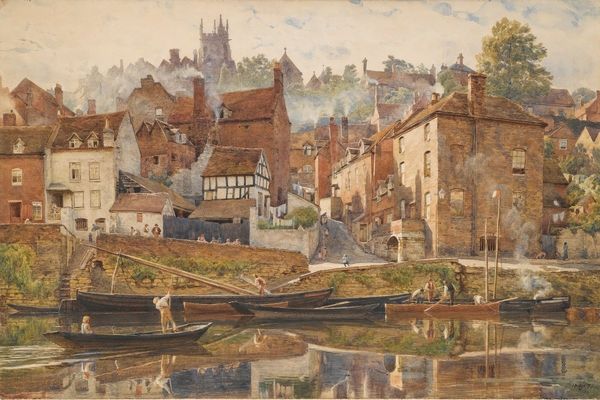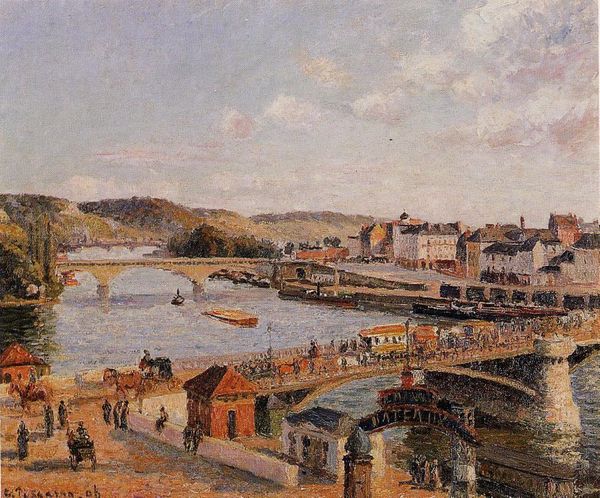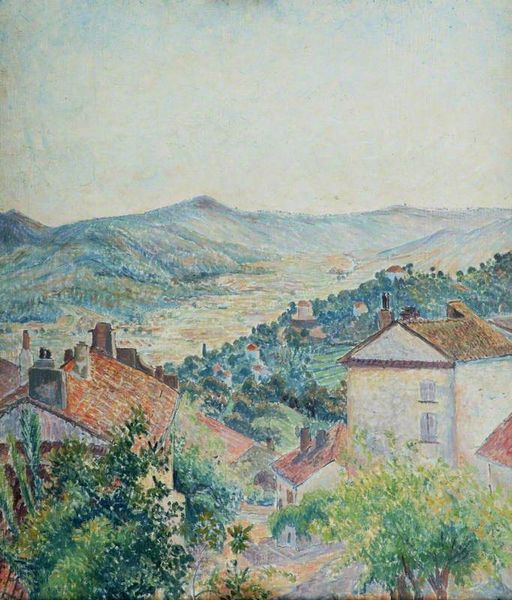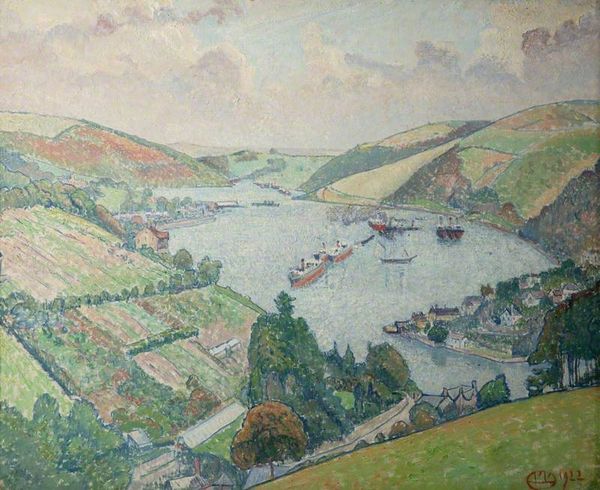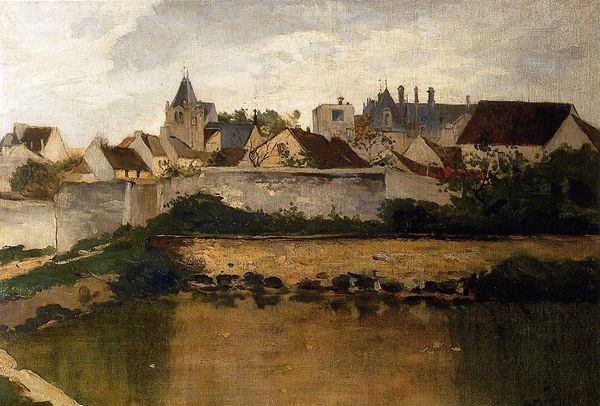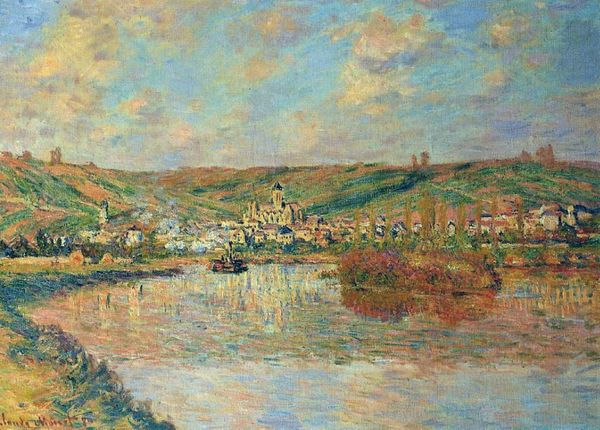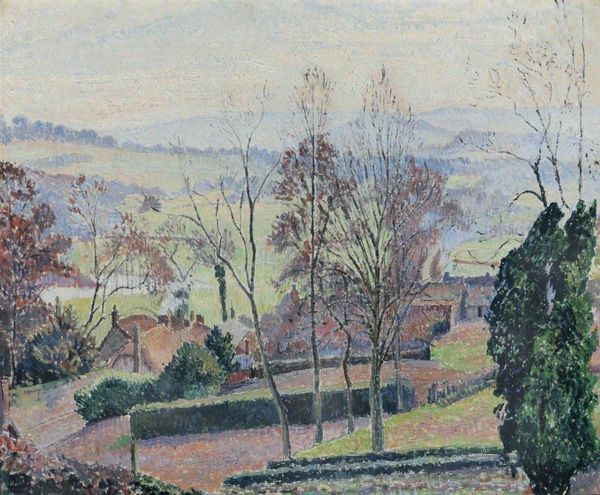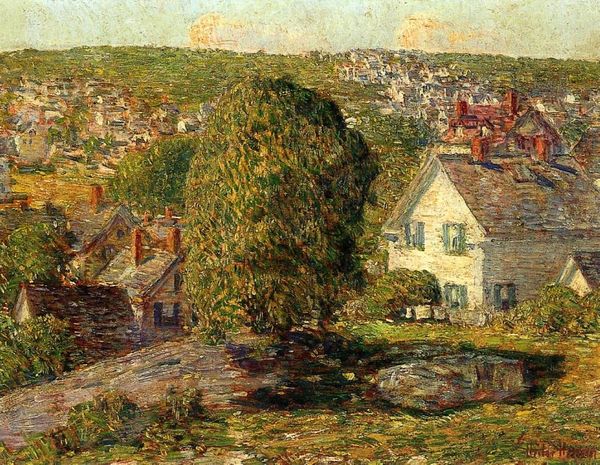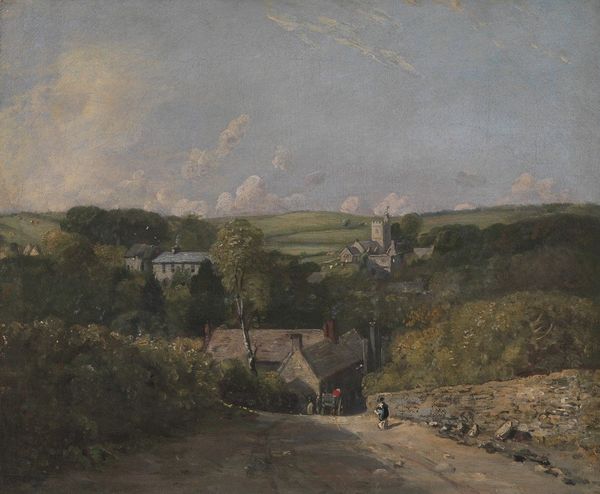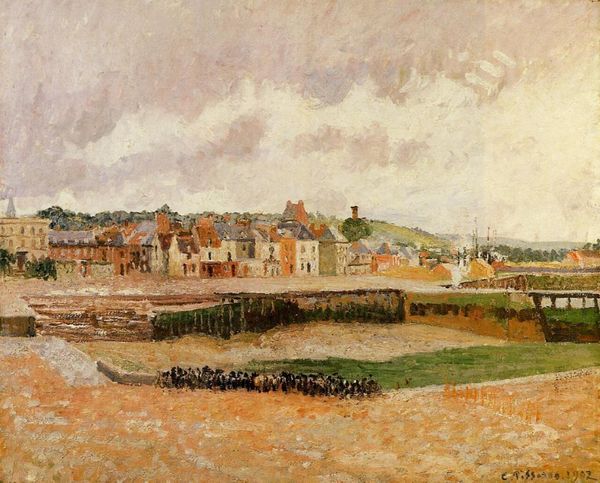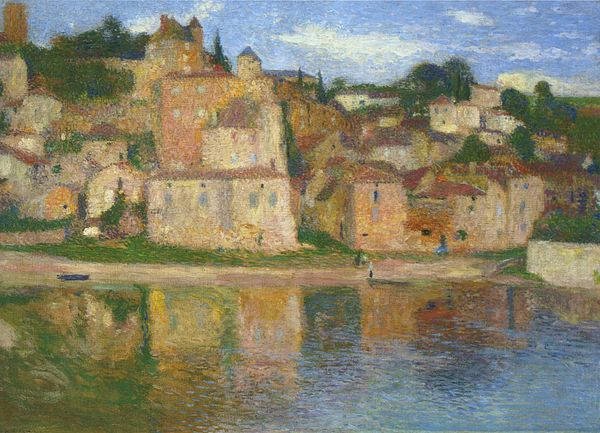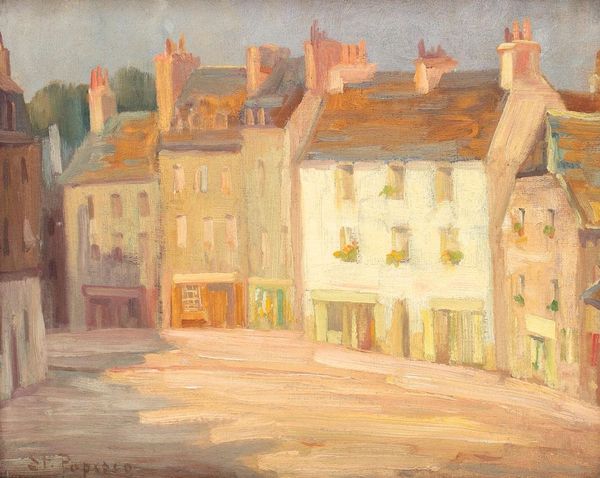
Copyright: Public domain
Editor: This is "Dartmouth" by Lucien Pissarro, painted in 1922 with oil on canvas. It gives us this incredible view overlooking the town. The pastel shades and hazy atmosphere create a very serene and dreamlike quality. How do you interpret this work, especially in light of its historical context? Curator: It's interesting to consider how Pissarro, as the son of Camille Pissarro, engaged with and diverged from impressionistic traditions. We see here a softening of the typical, more vibrant, impressionist palette. Considering the period after the First World War, with its shifts in social structures and artistic ideals, this softening could represent a yearning for pre-war tranquility, don't you think? How do you see this landscape interacting with the rise of modernism at the time? Editor: That’s a great point. I guess I was just seeing the idyllic imagery, the kind of nostalgia for simpler times you’re talking about. But modernism was gaining momentum, with artists exploring abstraction and challenging conventional representations. This feels very different, almost a retreat. Curator: Precisely! The choice to depict a town, rather than, say, a rapidly industrializing city, suggests a specific kind of engagement with modernity – one that seeks refuge in the pastoral. Where does Pissarro situate the viewer in this scene, and what impact might this choice have on the work's reception? Editor: We're positioned quite high up, looking down on the town. That feels intentional. Maybe to create a sense of detachment or overview, commenting from a distance? Curator: Perhaps, but it also mirrors a position of privilege – both literally and figuratively. It's a vantage point accessible only to those with the means to acquire such a view. This highlights the role of art in shaping perceptions of landscape and its relationship to social standing. Editor: I see what you mean. So, it's not just a pretty landscape. It is reflective of social hierarchies? I never thought of Impressionism that way. Thanks, this really changed how I looked at it. Curator: Exactly. It prompts us to consider not just *what* is depicted, but *who* is doing the depicting, and *why*. I found that context enriched my reading immensely too!
Comments
No comments
Be the first to comment and join the conversation on the ultimate creative platform.

